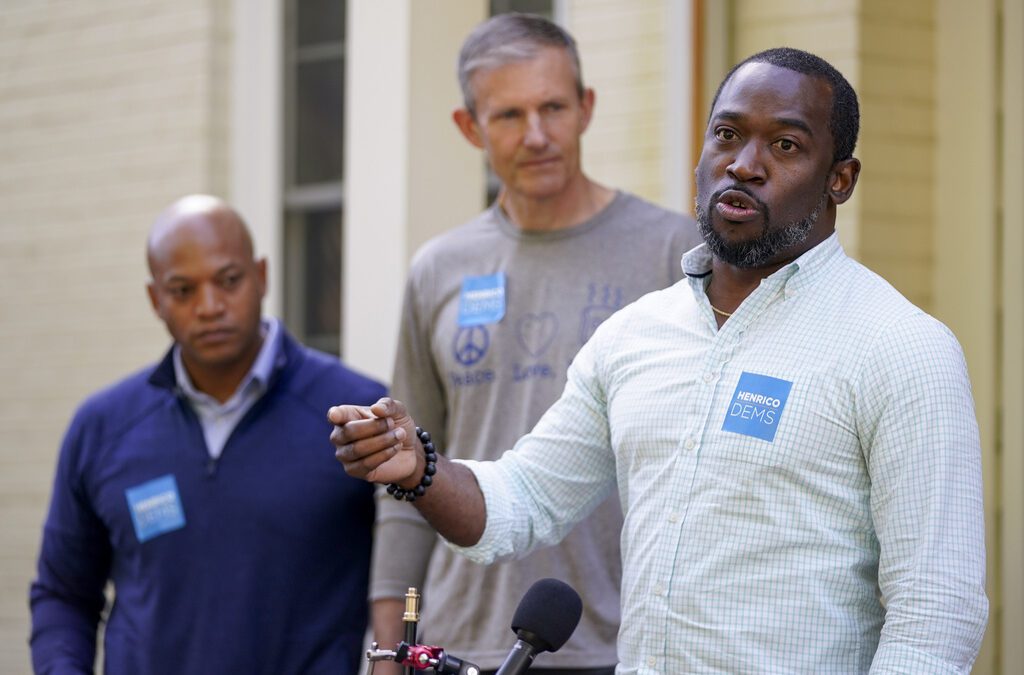
A mile a day could keep the COVID away.
CHARLOTTESVILLE – Going out for that morning run could help stave off complications with COVID-19, research suggests.
Professor Zhen Yan emphasized the importance of exercise – COVID diagnosis or not.
“Exercise has been shown since ancient times [to be] the only way to improve our physiological function or exercise capacity,” Yan said. “If you want to be better at doing some sports, you’ve got to do exercise training. But over the years, people realized that it has tremendous health benefits.”
Yan, the director of the Center for Skeletal Muscle Research at the University of Virginia, pointed out that exercising releases endorphins. That’s the feel-good chemical the body produces, which triggers brain receptors to reduce the perception of pain. The endorphins exercising produces can decrease depressive feelings and reduce stress. However, exercise doesn’t only have psychological benefits.
“Exercise helps prevent a numerous number of diseases, particularly the ones that we [worry] about today, like diabetes, cardiovascular disease, heart attack, stroke and neuromuscular disease, mental disease, cognitive function,” Yan said. “All of these things that we face today can be benefited from regular exercise.”
RELATED: Pfizer Vaccine Meets FDA Criteria
The COVID Connection
Beyond that, Yan’s studies show exercise helps produce certain antioxidants that protect from COVID-19 symptoms.
“The findings we have suggest regular exercise before the COVID is beneficial. We are not suggesting that when you get the COVID, you should go exercise,” Yan said. “So that’s the concept of regular exercise – it will better prepare you to deal with the COVID.”
That’s thanks to a connection between an antioxidant known as extracellular superoxide dismutase and the treatment of acute respiratory distress syndrome (ARDS), a cause of death in patients with COVID-19.
“This is an ancient enzyme. It’s a natural product in our body, so it has a very important function called an antioxidant function. It’s like, you know, I use this analogy – it’s like you have a defense system in your body, like antibodies. But this is not an antibody, it’s an antioxidant, which means it’s a protein that can get rid of the free radicals and the oxidant [that] can be harmful to your body. Skeletal muscle produces it . If you go exercise regularly, you’ll make more of these,” Yan said. “But these antioxidants have a biochemical feature that will allow these enzymes to get to your other tissues and organs vital for life, like a kidney, heart and in this case, the lungs. It can stay there and provide protection.”
Amazing results
Yan’s research findings strongly supported the possibility that exercise could prevent or reduce the severity of ARDS. That affects between 3% and 17% of all patients with COVID-19. Based on available information, the federal Centers for Disease Control and Prevention estimated 20% to 42% of patients hospitalized for COVID-19 develop ARDS. Simply exercising – therefore producing more extracellular superoxide dismutase – could significantly decrease those numbers.
“That’s why when people regularly exercise and unfortunately get infected by the COVID, they have a better chance to survive,” Yan said. “They have less severity in terms of the disease, including ARDS.”
Getting up and moving doesn’t necessarily have to involve hitting up the gym, lifting weights or running a marathon. Whatever works to get a person off of the couch is a step in the right direction.
“So far, all types of exercise will be beneficial,” Yan said. “Particularly for this one, my data suggests that aerobic exercise is particularly beneficial to get you ready to fight off the COVID infection.”
Examples of aerobic exercises include walking or hiking, jogging or running and biking. It also covers swimming, cross-country skiing and exercising on a stair climber or elliptical machine.
“In terms of duration, I would suggest that four or five times a week and 30 minutes to 45 minutes each time would be great,” Yan said.
JOIN THE CONVERSATION: Sign Up For Dogwood’s Daily Newsletter
Helpful research
Yan’s review also suggested extracellular superoxide dismutase as a potential treatment for chronic kidney disease, diabetic retinopathy and multi-organ dysfunction syndrome.
Yan collaborated with Hannah Spaulding, a postdoctoral researcher at UVA. They published their review in the scientific journal, Redox Biology.
Discovering the link and potentially saving lives with the information impacted Yan.
“This is like a dream come true for any scientist who can do research and understand something better, which can help a lot of people,” Yan said. “To me, it’s a fantastic thing to have.”
A final word
While COVID-19 brought exercise to the forefront through scientific research, the professor expressed hope that the momentum wouldn’t fade.
“Go exercise regularly,” Yan said. “If anything, the COVID situation is a wake up call for all of us to have healthy lifestyles and take care of [ourselves] so we can deal with this pandemic, but in the future, other situations.”
Amie Knowles reports for The Dogwood. You can reach her at [email protected]
Politics

Biden administration bans noncompete clauses for workers
The Federal Trade Commission (FTC) voted on Tuesday to ban noncompete agreements—those pesky clauses that employers often force their workers to...

Democratic shakeup in Virginia primaries for governor, lieutenant governor
Richmond Mayor Levar Stoney quit his bid for governor and jumped into the race to be the Democratic nominee for lieutenant governor. The race for...
Local News

The zodiac signs of 12 iconic women offer insight into their historic accomplishments
Zodiac signs can tell you a lot about someone’s personality. Whether they’re an earth, water, air, or fire sign, these 12 categories (which are...

Virginia verses: Celebrating 5 poetic icons for National Poetry Month
There’s no shortage of great writers when it comes to our commonwealth. From the haunting verses of Edgar Allan Poe, who found solace in Richmond's...





